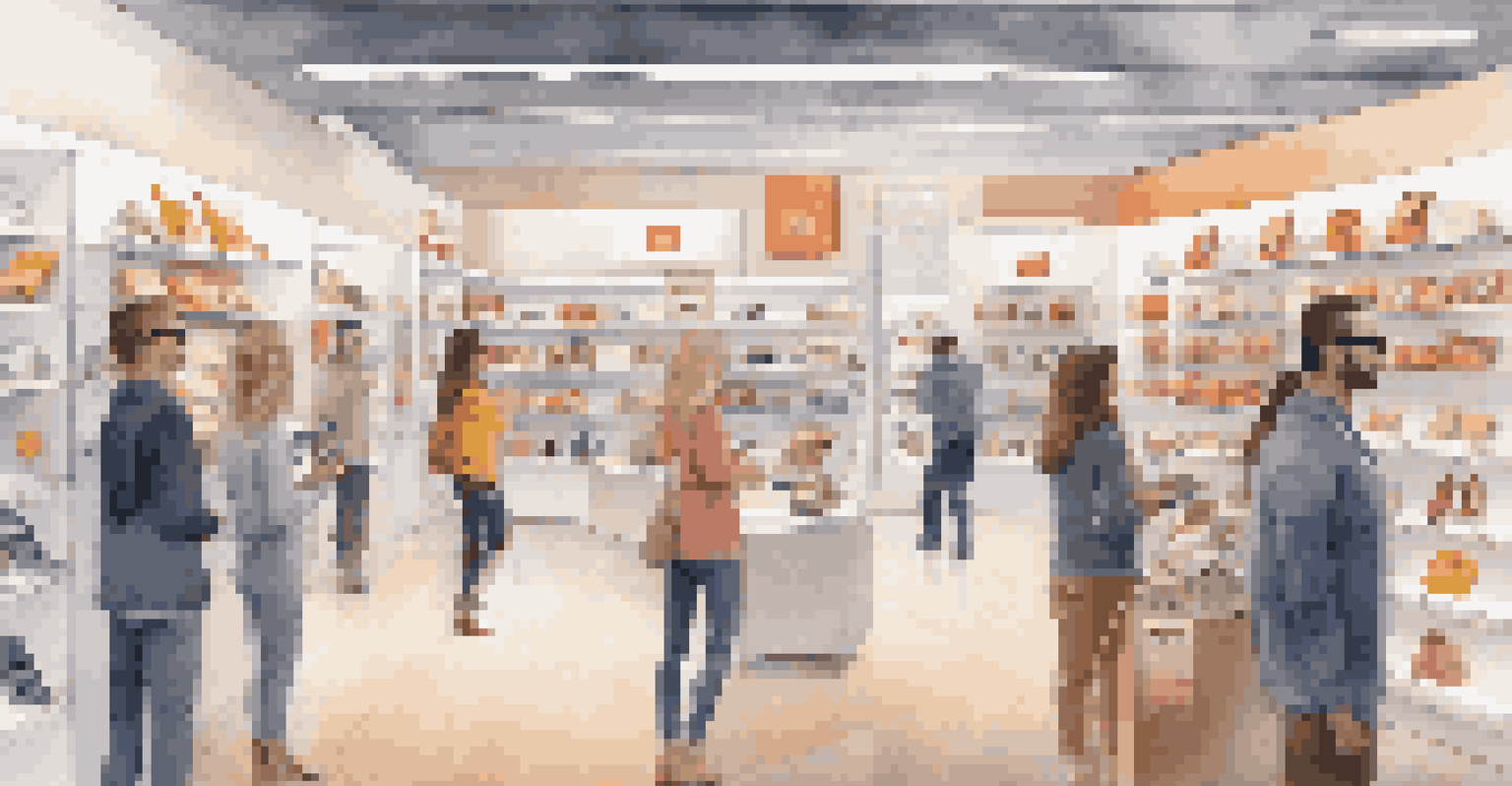Augmented Reality for Enhancing Visual Merchandising in Retail

What is Augmented Reality in Retail?
Augmented Reality (AR) blends digital information with the real world, enhancing how customers experience products. In retail, AR allows shoppers to visualize items in their own space before making a purchase, bridging the gap between online and in-store shopping. For example, furniture retailers like IKEA use AR apps that let customers see how a couch would look in their living room.
Augmented reality is more than just a novelty; it is a tool that can enhance the shopping experience and bridge the gap between the physical and digital worlds.
This technology not only engages customers but also provides a more informed shopping experience. By using AR, retailers can showcase products in dynamic ways, making the shopping journey more enjoyable and interactive. Imagine trying on clothes virtually or checking how a new gadget fits into your home setup—this is the power of AR.
As AR technology continues to evolve, it's becoming a crucial tool for retailers looking to differentiate themselves in a competitive market. By embracing AR, businesses can not only attract more foot traffic but also foster deeper connections with their customers.
Enhancing Customer Engagement with AR
One of the most significant advantages of AR in retail is its ability to enhance customer engagement. Shoppers can interact with products in new and exciting ways, which keeps them interested and encourages longer shopping durations. For instance, cosmetics brands like L'Oréal have developed AR apps that allow users to virtually try on makeup, making the buying process much more interactive.

This level of engagement can lead to increased sales, as customers are more likely to purchase products they can visualize and interact with. The novelty of AR experiences also encourages social sharing, further amplifying brand awareness. Think about customers posting their virtual try-on experiences on social media, effectively becoming brand ambassadors.
AR Enhances Customer Engagement
Augmented Reality allows shoppers to interact with products in innovative ways, increasing engagement and encouraging purchases.
Moreover, by leveraging AR, retailers can gather valuable data about customer preferences and behaviors. This information can inform future marketing strategies, ensuring that businesses are always one step ahead in meeting consumer demands.
Personalizing the Shopping Experience
AR offers retailers a unique opportunity to personalize the shopping experience for their customers. By using data from previous purchases or customer preferences, AR can recommend products tailored to individual needs. For example, a shoe retailer might use AR to suggest footwear based on a customer's past buys or browsing history.
The future of retail is not about the store or the website; it's about the experience.
This kind of personalized interaction not only enhances the shopping experience but also builds brand loyalty. When customers feel that a brand understands their preferences, they are more likely to return. It's similar to having a knowledgeable friend who helps you find exactly what you need.
Additionally, personalized AR experiences can make shopping more efficient, saving customers time and effort. In a fast-paced world, the convenience of having tailored suggestions at their fingertips is an invaluable asset for retailers.
AR as a Tool for Storytelling
Storytelling is a vital part of branding, and AR provides an innovative way to tell a brand's story. Retailers can create immersive experiences that draw customers into their brand narrative, making the shopping experience more memorable. For instance, a clothing brand might use AR to show the journey of their products, from design to production.
When customers connect with a brand's story, they are more likely to develop an emotional connection, enhancing customer loyalty. This approach is akin to reading a great book; the more invested you are in the characters, the more likely you are to keep turning the pages.
Personalized Shopping Experiences
AR provides tailored product recommendations based on customer preferences, fostering brand loyalty and making shopping more efficient.
AR-powered storytelling can also be a fun and interactive experience. Retailers can create games or challenges that customers can participate in while shopping, making the process not just about buying but also about enjoying the brand.
Bridging the Gap Between Online and In-Store Shopping
As online shopping continues to grow, AR helps to bridge the gap between physical stores and online experiences. AR technology allows customers to experience products in a virtual setting, which can influence their in-store purchase decisions. For instance, a customer might use an AR app at home to visualize how a product looks before deciding to visit a store.
This seamless integration enhances the overall shopping experience, allowing customers to gather information and make informed decisions. It's like having a personal shopping assistant who works with you both online and offline, ensuring you have all the necessary details.
Moreover, this hybrid approach can help retailers optimize their inventory management. Understanding customer preferences through AR interactions can guide stores in stocking products that resonate with their clientele.
Cost-Effective Solutions with AR
Implementing AR technology in retail may seem daunting, but it can be cost-effective in the long run. By reducing the need for physical samples or extensive in-store displays, AR can save retailers significant expenses. For example, a fashion retailer can showcase an entire collection virtually, minimizing the costs associated with physical stock.
Additionally, AR can enhance marketing strategies without breaking the bank. Retailers can create virtual campaigns that reach a wider audience without the high costs of traditional advertising. It's like hosting a global showcase from the comfort of your store.
Bridging Online and In-Store Shopping
AR technology helps customers visualize products virtually, influencing their in-store decisions and enhancing the overall shopping experience.
As AR technology continues to advance, the initial investment is expected to decrease, making it accessible for businesses of all sizes. By adopting AR early, retailers can position themselves as innovators in a rapidly changing market.
Future Trends of AR in Retail Visual Merchandising
Looking ahead, the potential for AR in retail visual merchandising is enormous. With advancements in technology, we can expect even more intuitive and immersive experiences that will redefine how we shop. Imagine walking into a store where virtual guides help you navigate products tailored to your preferences.
Moreover, the integration of AI with AR could further enhance personalization, making the shopping experience even more tailored and efficient. This could lead to virtual assistants that understand a customer's needs and preferences in real-time, ensuring a seamless shopping journey.

As retailers continue to explore and invest in AR, staying ahead of these trends will be crucial. Embracing innovation will not only attract customers but also solidify a brand's position as a leader in the retail space.